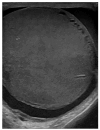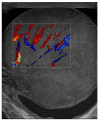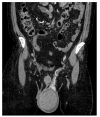A Unique Case of Extramedullary Relapse in Acute Lymphoblastic Leukemia: Testicular to Ocular, Cardiac, and Colonic Involvement and the Role of Sperm Phenotyping in Diagnosis-Case Report and Literature Review
- PMID: 39860409
- PMCID: PMC11766149
- DOI: 10.3390/jcm14020405
A Unique Case of Extramedullary Relapse in Acute Lymphoblastic Leukemia: Testicular to Ocular, Cardiac, and Colonic Involvement and the Role of Sperm Phenotyping in Diagnosis-Case Report and Literature Review
Abstract
Acute lymphoblastic leukemia (ALL) is a malignant condition of lymphoid progenitor cells that primarily affects the pediatric population, but also adults. The 5-year survival rate is 90% in children and approximately 40% in adults, with survival increasing through the use of peripheral stem cell allotransplantation (SCT). The relapse rate after stem cell transplantation (SCT) in adult acute lymphoblastic leukemia (ALL) patients ranges from 35% to 45%, making relapse a major cause of death in this population. Background: We present an atypical case of late testicular involvement in ALL in a 50-year-old man diagnosed with ALL pro-T in remission post-chemotherapy (GMALL 2003 protocol) and allogeneic stem cell transplantation (alloSCT) from a related donor. Methods: This case describes a 50-year-old male with ALL pro-T who experienced three rare extramedullary relapses post-chemotherapy and alloSCT. Five years after remission, he had a unilateral testicular relapse confirmed by immunophenotyping of spermatic fluid. Results: Despite no bone marrow involvement, he was treated with chemotherapy, intrathecal therapy, and bilateral testicular radiotherapy. He later relapsed in the orbit, controlled by radiotherapy, followed by a third relapse in the heart and colon. Conclusions: This case highlights the unusual sites and consecutive nature of extramedullary relapses in adult ALL.
Keywords: acute lymphoblastic leukemia T; cardiac; orbital; spermatic fluid immunophenotyping; testicular relapse.
Conflict of interest statement
The authors declare no conflicts of interest.
Figures


















References
LinkOut - more resources
Full Text Sources

